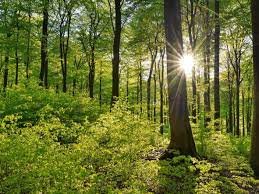The COVID-19 pandemic which is infecting everything in its path of transmission is a cause for concern and one of the reason behind it is due to man’s desecration of floras. The forests which acted as firewall against the dangerous zoonotic diseases and viruses has lost its ability due to depletion of forests and has left us and other species vulnerable to dangerous affliction of health systems whose consequences are unimaginable.
Man has survived within the lap of forests where the twigs were used to provide fire; italso provided us with primitive weapons and shelter; andhas fueled the growth of human civilization. Diverse flora is crucial to preserving biodiversity especially forests which are sometimes more diverse than other ecosystems. Forests cover only 31% of global land area which is very minimal and in addition distribution of forests is very uneven. We have lost nearly 420 million hectares of land from 1990s and nearly 21% of plants are threatened with extinction. Deforestation and forest degradation has dangerously impacted living beings and has changed the composition of biodiversity and it also has led to reduction in carbon capture.
Deforestation of forests is primarily caused due to land use change and land conversion to agricultural systems. Large scale commercial cultivation accounts for 40% of tropical forests deforestation between 2000 and 2010. The associated consequences can be seen in the calamitous events that has occurred till now; such as Kerala floods of 2018 due to degradation in Western Ghats; increasing desertification, urban flooding in Chennai and Mumbai due to loss of wetlands and loss of carbon sink which has resulted in global warming. Forests which acts as lungs of earth has lost its capability to counter the rise in carbondioxide and air pollution. Forests which acted as green muffler in cities in decreasing noise pollution has not been able to do this anymore.
Forests are essential to survival of every biotic organisms present as they are interdependent on each other and contribute not only to aesthetic presence but also strengthen our food security due to pollination by bees which are dependent on flora. Forests serve as safety net for 1 in every 5 people who are dependent on income generation and forest based solutions can produce 80 million jobs as per UNEP data. But the most vital thing is that cost of deforestation and loss of vital ecosystem services is estimated to be approximately 80 billion USD per year which is a costly move and is distressing in this pandemic induced world. Forests also provide an avenue for income generation for women and thus maintaining gender equality.
Despite the depressing picture currently, there is some good news that rate of deforestation which was at 16 million hectares from 1990s has come down to 10 million hectares and net loss of forest areas has decreased from 7.8 million hectares to 4.7 million hectares between 2010 – 2020. According to State of forest report 2019, India’ share of forest cover has increased to 24.56%. This is a heartening news but we must not remain complacent in our efforts and proactively work together to achieve the desired outcome of a green world by conducting van mahotsav, earth day and raise awareness amongst people and make the students conscious about the value of forests in our life.
It is said that the bees are our lifeline and because of their existence pollination occurs and the entire mankind gets a good share of food resources with deforestation it is apprehended there may come a time when food scarcity will haunt us because all the bees will be destroyed along with forests. There is no denying the fact that a green cover is also an answer to the climate crisis which has indeed become a grave concern for all of us.











More Stories
Low vision clinic inaugurated at AIIMS Bhubaneswar
Urban education programme comes in handy for Odisha’s tribal, dalit kids
Now country ‘aatank’ struggling for ‘aata’: PM